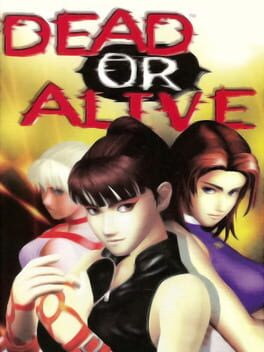▲
1
▼
Tina's hair color was originally meant to be blonde. However, the Model 2 hardware had difficulty rendering yellow in the game. This is why Tina's hair is brown. The issue was fixed in subsequent installments and updates to the game.
▲
1
▼
According to Itagaki, Gen Fu was likely inspired by the Xinyi Liuhe practitioners from the 1988 manga series, Kenji.
▲
1
▼
Tina's character and fighting style were based on real-life Japanese pro-wrestler Manami Toyota.
▲
1
▼
Bayman's character and fighting style were based on real-life Russian sambo wrestler and former military officer, Volk Han.
▲
1
▼
Early promotional images for the game features Kasumi in a different, more revealing, costume. Her final design were be changed to white and have underclothing. And her previous design became her alternate costume.
▲
1
▼
The game was originally going to be titled "Polygon Fighter" during its prototype phase of development. The title was then changed to "Ninja Fighter" before finally settling on "Dead or Alive" because of the pressure Tecmo placed on the game's success.
▲
1
▼
When porting the game to the Saturn, many of the background elements were heavily scaled down. This resulted in many interactable objects, like the swaying bridge in Hayabusa's Stage, being removed.
▲
1
▼
The Western versions of the arcade game and the Sega Saturn ports omit the story epilogues from each character's ending for unknown reasons.
▲
1
▼
Jann Lee's design, fighting style, and moves draw heavy influence from several Bruce Lee films including The Big Boss, Fists of Fury, Game of Death, Way of the Dragon, and Enter the Dragon.
▲
1
▼
Kasumi was initially envisioned as a male character and was not going to be the protagonist. However, after changing the character's sex to female, series creator Tomonobu Itagaki became attached to her new design and decided to make her the heroine. Itagaki would go on to describe Kasumi as his “daughter”, and that she is “like a Venus” to him, as well as defending her sexualization among the rest of the series cast despite her canonical age of 17 years old being considered underage in countries with higher ages of consent like the United States. The now-defunct game journalism website QuickJump quoted him in 2007 as saying “in Japan, [the sexualization of a 17-year old] is okay. Maybe it’s 20 in America.”
▲
1
▼
Ryu Hayabusa's iconic Izuna Drop was inspired by a move from Sanpei Shirato's manga series Nukenin Kamui (Kamui Gaiden). The game's director, Tomonobu Itagaki, had to get formal permission from Shirato to include the move in the game. It has since been one of Hayabusa's staple attacks throughout all of the character's appearances.
▲
1
▼
In the prototype version of the game, Raidou is given an end card sequence, hinting that he would have been unlockable in the final version.
"After all, this is all it is."
A long time had passed since Raidou was expelled from the Mugen Tenshinryuu village. He had only hungered for power ever since. He fought all and every fighter and claimed his technique his own.
Even as he received the invitation to participate in the tournament, he felt this might sate his hunger for power.
However, it seems all was in vain.
Raidou called for thunder and disappeared into the mist...
"After all, this is all it is."
A long time had passed since Raidou was expelled from the Mugen Tenshinryuu village. He had only hungered for power ever since. He fought all and every fighter and claimed his technique his own.
Even as he received the invitation to participate in the tournament, he felt this might sate his hunger for power.
However, it seems all was in vain.
Raidou called for thunder and disappeared into the mist...
▲
1
▼
Bayman's codename "Gatsby" from the game's early development is based on the American novel The Great Gatsby.
▲
1
▼
The very first character developed for the game was a fighter codenamed "Kelly", who was originally cut from the final roster for being incomplete compared to later characters. However, since the team needed one more fighter, they decided to go back and develop a more complete version of Kelly. That character became the final version of Zack.
subdirectory_arrow_right Dead or Alive (Game)
▲
2
▼
In the original version of the game, Kasumi was originally going to have a fighting style based on rapidly spinning. However, the hardware for the Model 2 engine could not handle the speed required for the technique. So the concept was scrapped. The idea was reintroduced when retooling the game for the PlayStation. Since the console was able to support a fast rotating character, a new character was added to the roster with the original idea for the fighting style. This character ultimately became Ayane, in the final game.
Related Games
Dead or Alive 5 Ultimate
Dead or Alive 5: Last Round
Dead or Alive 3
Dead or Alive 6
Dead or Alive
Dead or Alive 2 Ultimate
Dead or Alive 4
Dead or Alive 2
Dead or Alive 5
Dead or Alive: Dimensions
Dead or Alive Xtreme Beach Volleyball
Stranger of Paradise: Final Fantasy Origin
Ninja Gaiden Shadow
Bad News Baseball
Incredible Crisis
Monster Rancher DS
Metroid: Other M
Solomon's Key
Dead or Alive: Code Chronos
Hyrule Warriors: Legends
Ninja Gaiden III: The Ancient Ship of Doom
Rygar
Ninja Gaiden
Kagero: Deception II
Hyrule Warriors
Raiden
Dead or Alive ++
Mighty Bomb Jack
Fire Emblem Warriors: Three Hopes
Ninja Gaiden Black
Ninja Gaiden II
Trapt
Nioh
Ninja Gaiden
Caveman Ninja
Congo Bongo
The Incredible Shrinking Character
Marvel vs. Capcom: Clash of Super Heroes
Tekken 3
Mechanized Attack
Doom
Vulcan Venture
JoJo's Bizarre Adventure: Heritage for the Future
Pac-Man
Zero Wing
Garou: Mark of the Wolves
Double Dragon 3: The Rosetta Stone
Red Earth
Rayman 2
Ogre Battle: The March of the Black Queen

